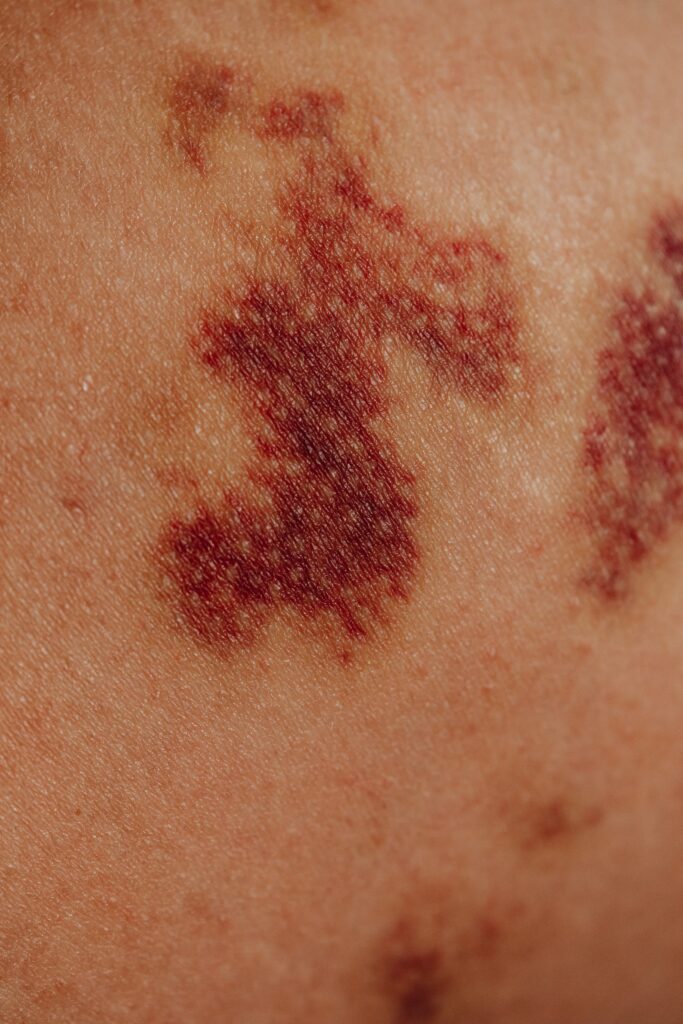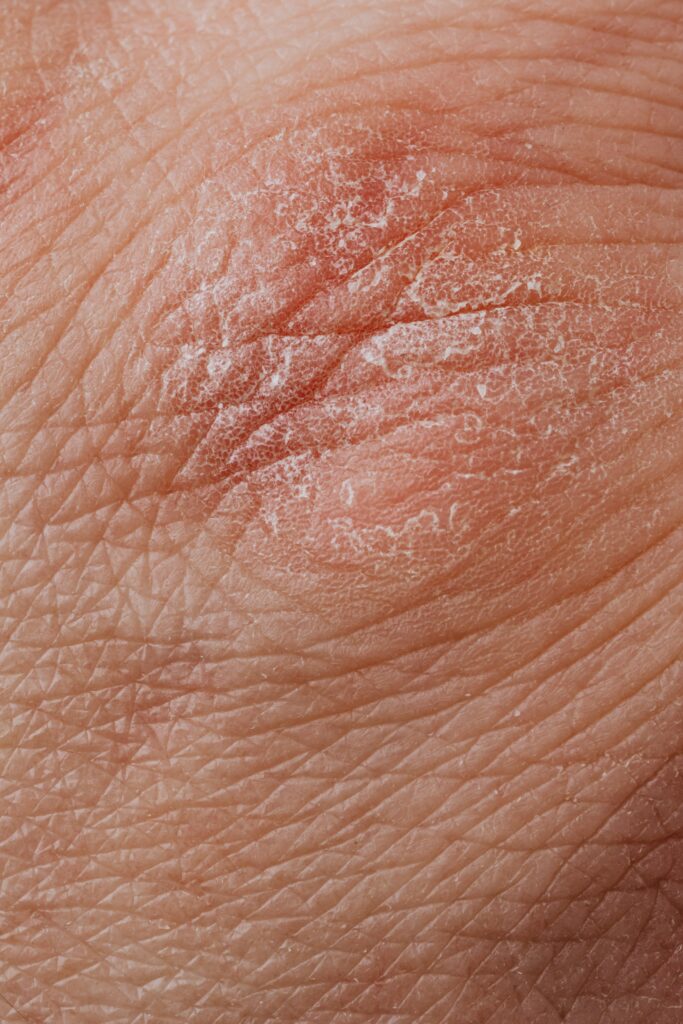Have you ever had the childhood disease called chickenpox? If you are over 50, chances are you had it. The good news is most people only get it once, due to your body becoming immune to the virus afterwards, which the actual name is called the varicella-zoster virus. The bad news is that the virus is still with you, it’s just dormant or inactive within your nerve cells since when you were young. And unfortunately, this virus can turn into shingles later in life. According to the CDC, about one third of the nation’s population will get shingles, especially those over 60. That’s almost one million seniors! However, there are ways to take care of your health and prevent you or your elderly parents from getting this painful disease. First, let’s talk about what really is shingles.
What is Shingles?
Shingles is actually a viral infection, which will affect your nerves and can cause a rash that is both unpleasant and very painful to the person dealing with it. For those who had chickenpox, the risk of shingles is even higher. In fact, your chances of getting it increases the older you become. Many scientists and medical professionals still do not understand what causes the shingles virus to become active, especially being dormant for so many years. Some believe it may be connected to a person’s immune system and how it responds to infections.
Nearly all cases of the viral disease are of adults older than 60 years of age. According to the National Institute on Aging, the chances are even greater for those who are over 70. Approximately, one in three adults will get shingles as they age. Fortunately, for some, the virus never becomes active throughout the body, and thus, does not develop into shingles. Now, let’s talk about the symptoms or signs that are common to have if you get shingles.
Common symptoms and signs of Shingles
There are several signs and symptoms to look out for if you suspect you have the shingles. Below are just a few common symptoms that people with Shingles may have:
- Fluid-filled blisters
- Burning, shooting pain
- Sensitive to touch, tingling, mild itching, or numbness of the skin
- Chills, fever, headache, or upset stomach
- Fatigue
- Sensitivity to light
Some elderly people may experience mild symptoms of shingles, while others are more intense. If you get blisters, they can show up on the face, such as near the eyes or ears. If this happens, it may cause eye damage, blindness, paralysis, or hearing loss during the time you have the shingles. Some symptoms do last even after the shingles are gone. In some cases, the symptoms may be mistaken as heart, lung, or kidney problems, depending on where the pain is located. If this occurs, call your doctor. It is also advised to talk to your doctor the moment signs or symptoms occur. Next, we will explain some of the primary causes of shingles.

The Causes of shingles
As mentioned above, Shingles comes from a virus called the varicella-zoster virus (VZV), which is the same virus that caused chickenpox in children. If you were one to have chickenpox as a child, the virus is already in you. This is why anyone who had chickenpox when they were little has a greater chance of contracting shingles as an older adult. Most people who have the VZV virus may not get shingles themselves. Here is one common reason for the elderly to get shingles: a weakened immune system. And when you don’t have a strong immune system, fighting off infections is even harder. Another reason is our age. For instance, the older we are, the higher are the chances of getting shingles. This is why about half the population of people over 80 will get shingles. Stress and other conditions can also play apart in getting the shingles disease as well. Many people who have higher chances of cancer, have underwent organ transplants, or experienced excessive exposure to the sun also can get the shingles.
How is shingles diagnosed and treated?
If you suspect that you have shingles, talk to your doctor as soon as possible; or, preferably no later than three days after a rash starts. Sometimes the quickest way to know you have the shingles is by just getting a visual examination or a shingles test itself . To determine the result, a small pice of skin tissue will be sent to a lab where they can test it and confirm that the patient has been diagnosed with shingles or if it something else entirely. Unfortunately, there is no cure for shingles. However, antiviral medications can help treat the condition. The virus medication can also help clear up blisters faster and can limit any pain you may be having. The best way to prevent the shingles virus is by getting the shingles vaccine. Other vaccines may also help prevent older adults from certain diseases like shingles, such as COVID-19, flu, pneumonia, tetanus, and whooping cough.
How long does shingles last?

Shingles often lasts between three to five weeks. Most people feel slight numbness, burning, or tingling as the first signs. After about a week, redness may occur on or in the area of where the tingling first occurred. In most cases, the rash or redness may turn to blisters with fluid inside. About a week to 10 days later, the blisters will dry up and a scab will appear. Within two weeks, the scab tends to fall off. The good news is that most people only get the shingles once; however, there have been some cases of seniors who have gotten the shingles again.
Is shingles contagious?
One thing that’s good news is you can’t pass on the symptoms of Shingles to others. Plus, the risk of spreading shingles is low if the rash is covered. So, you probably won’t get it just because a close friend or family member already has it. However, for those who may not had chickenpox are more likely to get Chickenpox itself if they are in direct contact with the person with a fluid-filled rash. This is also true for those who did not get the chickenpox vaccine. They too may be more susceptible of getting the chickenpox virus once again.
Who should get the shingles vaccine?

For those who have already had chickenpox, the chickenpox vaccine, or shingles itself, should go ahead and get the shingles vaccine. In fact, if you don’t remember having chickenpox, then getting the shingles vaccine is highly recommended. This also includes seniors who have had the shingles vaccine called Zostavax, which is the older, and original shingles vaccine. Doctors now recommend the Shingrix shingles vaccine, which is a safer, newer, and more effective vaccine to the shingles. The Shingrix vaccine is FDA-approved, and aimed to prevent shingles infection in adults 50 years and older. It is believed to also help adults 18 and up that are prone to have immunity problems, due to prior disease or therapy concerns. The vaccine will protect seniors that get it at least 85 percent of the time, and during the first four years after having the vaccination. According to the U.S. Department of Health and Human Services (DHHS), it is recommended that those living with HIV or AIDs, and are 50 years and older, should get the Shingrix vaccine, regardless of their CD4 count. The shingles vaccination may cause some side effects, such as headaches and injection-site reactions. However, most of them are mild.
Who should not get the Vaccine
Here are some reasons to not get the shingles vaccine: Seniors who are already suffering with shingles, are sick, have a fever, or had some type of allergic reaction to a prior shot of the shingles vaccine, should not get the vaccine again. Those who are breastfeeding or pregnant should also not have the shingles vaccine. For anyone who have not had the chance to get vaccinated yet are experiencing some symptoms of the virus, there are a few medications available to ease the pain and reduce symptoms. The shingles medications available to seniors are acyclovir (Zovirax), valacyclovir (Valtrex), and famciclovir (Famvir). Each one must be prescribed by a doctor.
Common side effects of the Shingles vaccine
Some have reported that after vaccination they may feel the following:
- Pain and redness at the injection site
- Swelling at the injection site
- General malaise, muscle pain, and tiredness
- Systemic symptoms such as headache, shivering, fever, and upset stomach
Tips for coping with shingles

Having Shingles can make a person feel agitated and uncomfortable for the duration of the time they have it. However, there are some ways to get through the pain. Here are a few handy tips to make you feel better:
- Wear loose-fitting, natural-fiber clothing.
- Take an oatmeal bath or use calamine lotion to soothe your skin.
- Apply a cool washcloth to your blisters to ease the pain and help dry the blisters.
- Keep the area clean and don’t scratch the blisters; it can become infected or leave a scar.
- Try simple exercises like stretching or walking.
- Get plenty of rest and eat well-balanced meals.
- Distract yourself by doing other activities, such as watch TV, read, talk with friends, listen to relaxing music, or work on a hobby such as crafts or gardening.
- Avoid stress, doing so, can worsen the pain.
- Let your family know how you are feeling and ask for support while going through the shingles
Chances of Long-term Pain
In some cases, the pain of shingles can linger on. This can become a permanent condition to certain seniors. This ongoing pain is referred as PHN, postherpetic neuralgia. PHN leaves seniors with pain in the areas where the rash occurred. Sometimes, the older you are when you get shingles, the greater the chance of PHN and the more severe the pain can be. For some, PHN can cause other conditions, such as anxiety and depression, weight loss, and sleeplessness. Seniors can also find it difficult to do ADLs, such as cooking, dressing, and even eating. If you or have a senior parent suffering from PHN, contact your family physician immediately. Fortunately, PHN usually lessens over time.
Another possible long-term effect of the shingles is bacterial skin infections, especially the older the individual is when they are diagnosed. These skin infections can cause scarring of the skin and may affect a person’s vision and hearing as well. Sometimes, the Bacterial infection may bring on more serious conditions, such as Bell’s palsy, which may paralyzes the nerves in the face.
Does Insurance companies pay for the Shingles Vaccine?
For most healthcare plans, as long as you are over 60, then the shingles vaccine should be covered. However, it is recommended to check with your provider to see if you meet their criteria. Some factors may apply, such as your age, the type of plan you have, and your health history. For those with no insurance, the average cost of the shingles vaccine is between $200 to $250, per injection. If you choose the two-shot vaccine option, the average cost is about $350. Most people that choose the two doses of Shingrix, need to wait about two to six months between doses, to prevent shingles and complications from the disease.
Anyone over 50 should contact their healthcare provider and insurance to know their options and how to prevent the shingles virus. Those with Medicare Part D may have their shingles vaccine partially or fully covered. On the other hand, those with Medicare Part B may not have their shingles vaccine shot covered. Seniors who have Medicaid, may or may not have the shot covered, it just depends on the provider.
Other Resources Available
Getting older can bring on some unpleasant conditions. However, there are many online resources for seniors tofind everything they can on diseases or conditions that affect the elderly. For more information on the shingles virus or the shingles vaccination, contact the Centers for Disease Control and Prevention, National Shingles Foundation, and the National Institute on Aging.